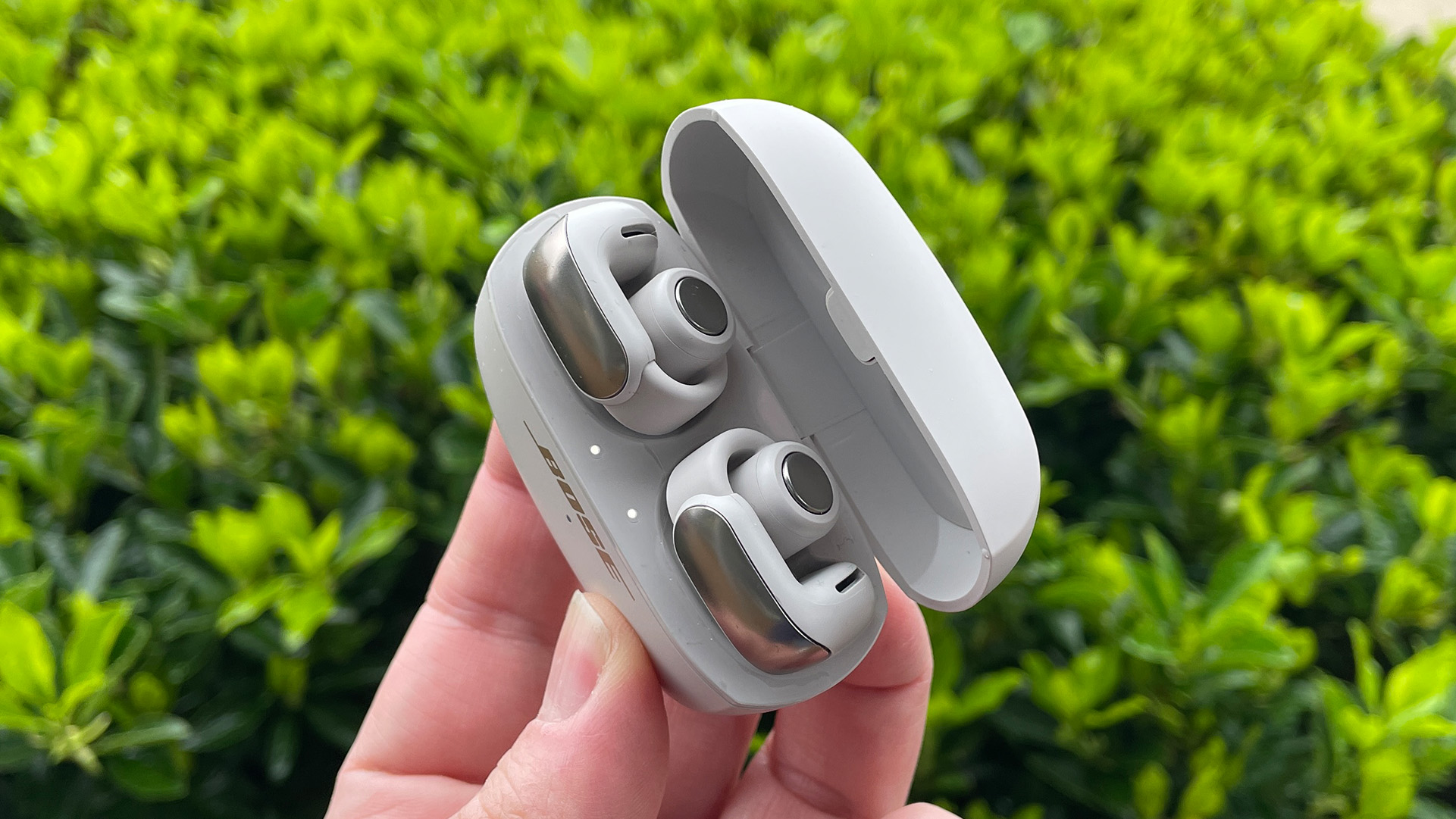
There’s a new type of wireless earbud in town. One that won’t burrow into your ear canal, won’t isolate you from the outside world but will make you wonder if you should try them out.
This ‘open’ earbuds category is still in its infancy, but Bose hasn’t wasted any time in getting involved with its very first pair; the Ultra Open Earbuds. They’re ambitious, and not just because of their premium price tag. There’s also a brand-new design for users to get to grips with, plus a couple of nuances that also come as part of this interesting new package.
Price
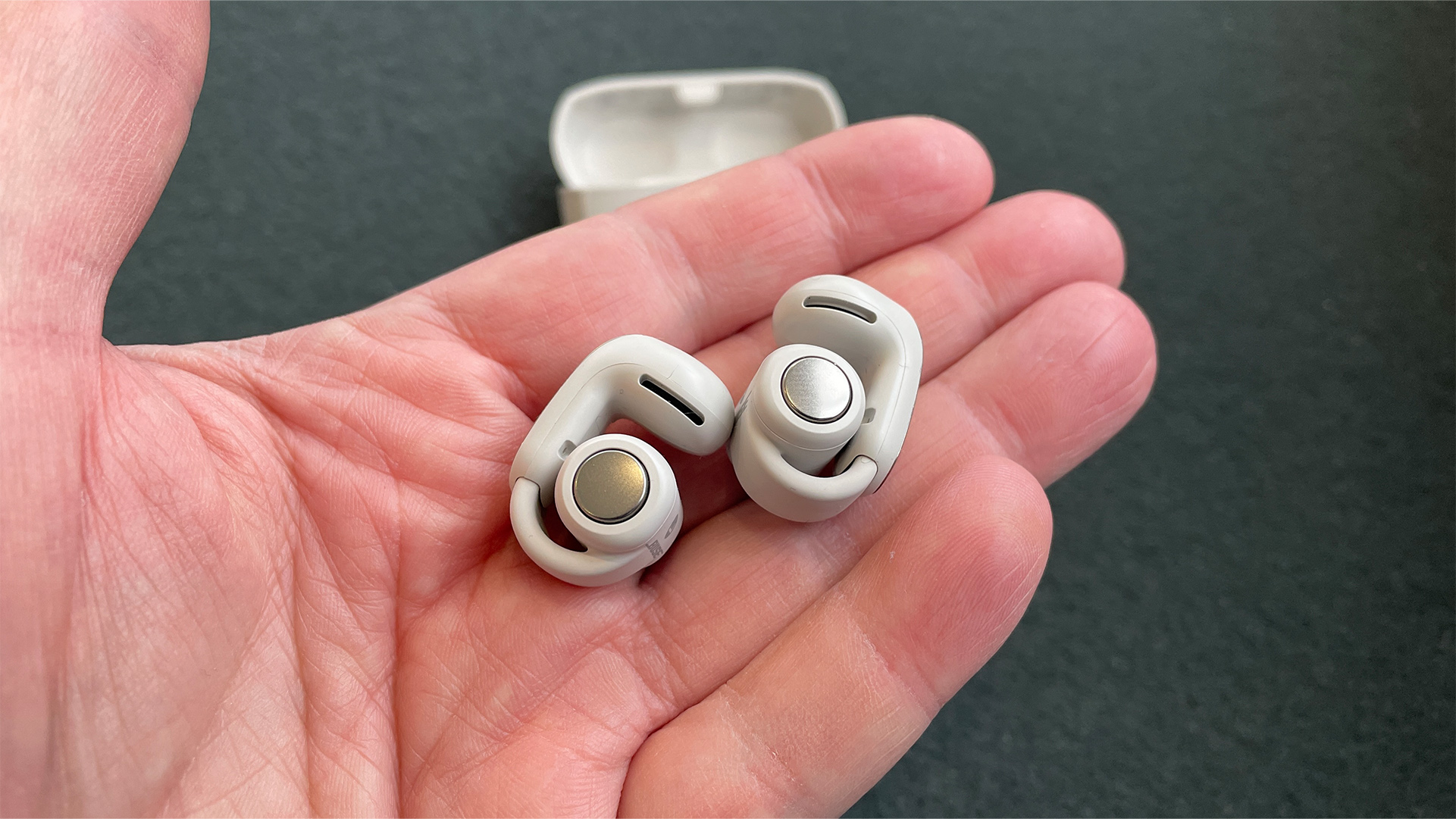
Anyone expecting the Bose Ultra Open Earbuds to be a budget option might want to look away now. The earbuds are priced £299 / $299 / AU$449, which puts them right at the top end of the market. For context, Bose’s flagship noise-cancelling in-ear model, the QuietComfort Ultra Earbuds cost £300 / $299 / AU$450, although pricing has started to drop a little in recent months.
Other pairs of ‘open’ wireless earbuds on the market that we’ve tested include the Sony Linkbuds (£150 / $180 / AU$300) and Huawei FreeClip (£180 / $230 approx / AU$320 approx). Historically, though, if anyone’s going to justify a high price tag, there’s a good chance it’s going to be Bose.
Build & design
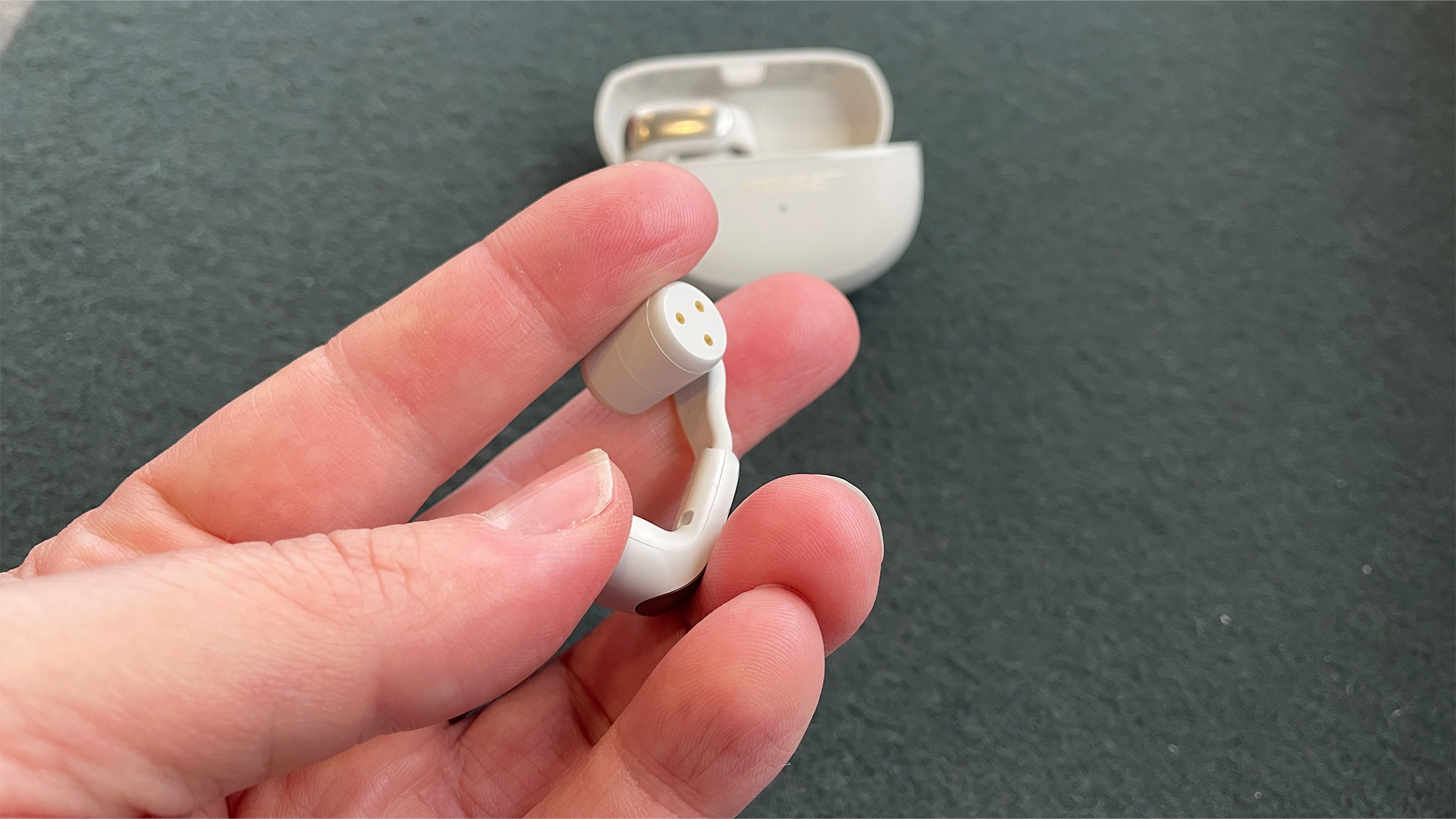
Not everyone likes the feeling of isolation you get from a traditional pair of wireless earbuds, nor do they want a silicone tip burrowing into their ear canal. For some users, it can become uncomfortable over time.
The Bose Ultra Open Earbuds bypass all these potential issues thanks to their clever design. Each earpiece comprises three main parts: the pill-shaped bud, the battery cylinder, and a silicone band or cuff that connects the two sections. Bose refers to it as the ‘flex joint’, through which all the internal wiring runs.
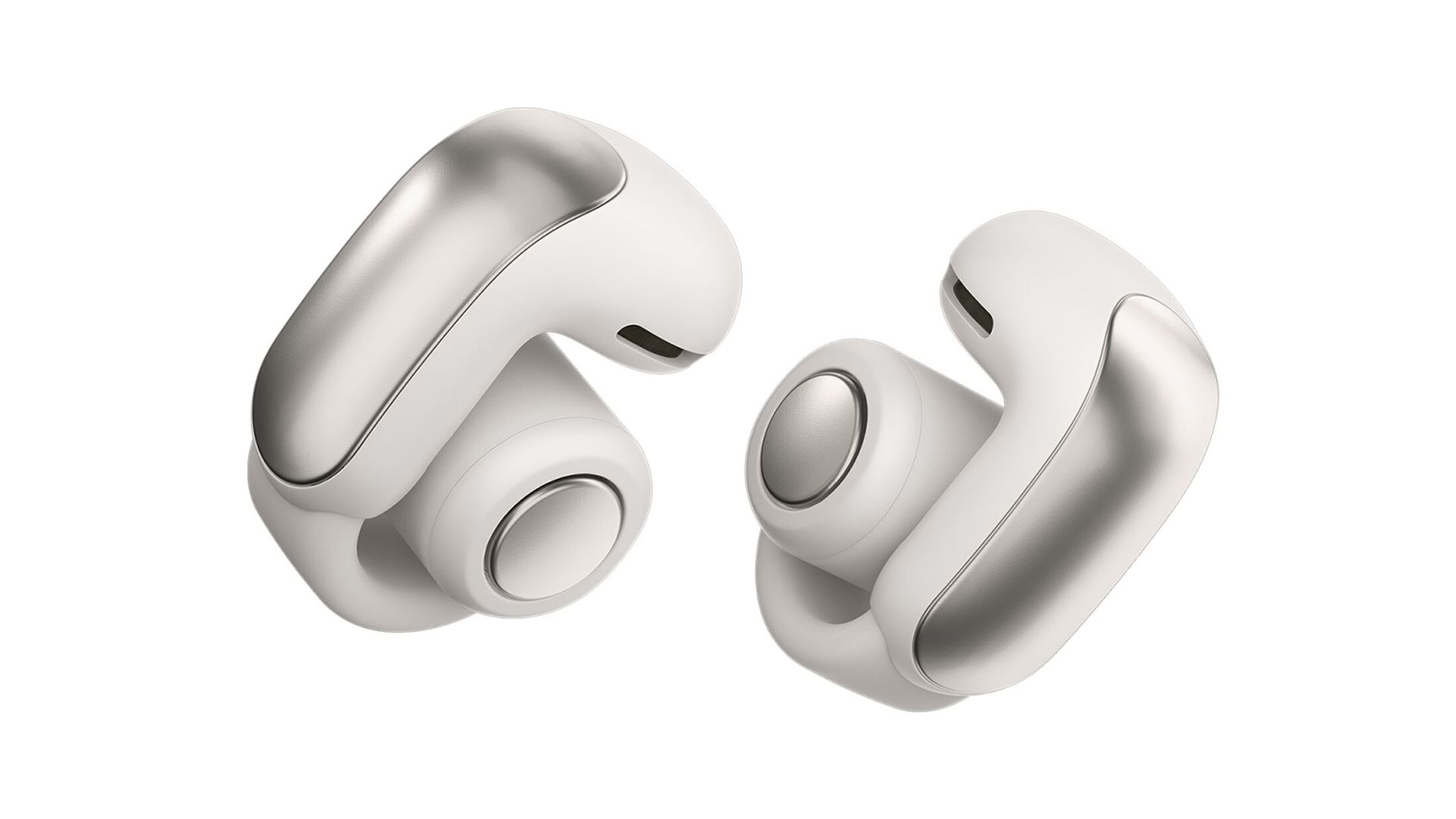
Bluetooth version 5.3
Codec support SBC, AAC, aptX Adaptive
Noise-cancelling? No
Battery life 7.5 hours, 26.5 hours (including charging case)
Finishes x2 (Black, White Smoke)
The earbuds use a mix of physics and proprietary Bose technology called Open Audio to create sound. A high-powered transducer is positioned in a tightly controlled acoustic enclosure and has been positioned to fire music towards your ear canal.
So you don’t need a seal for the Bose buds, but you do still need to be careful about positioning as the direction the bud fires will have an impact on the information that makes it into your earhole.
Given their design, you might be wondering about sound leakage, but we didn’t find it to be a huge problem compared to more traditional designs. At the levels you’ll probably be listening, especially if you want to hear the outside world, we wouldn’t be too worried about people hearing our questionable music choices.
Yes, if you’re having to compete with loud external noises and you crank up the volume, then the amount of leakage will increase – but that’s only to be expected.
Comfort
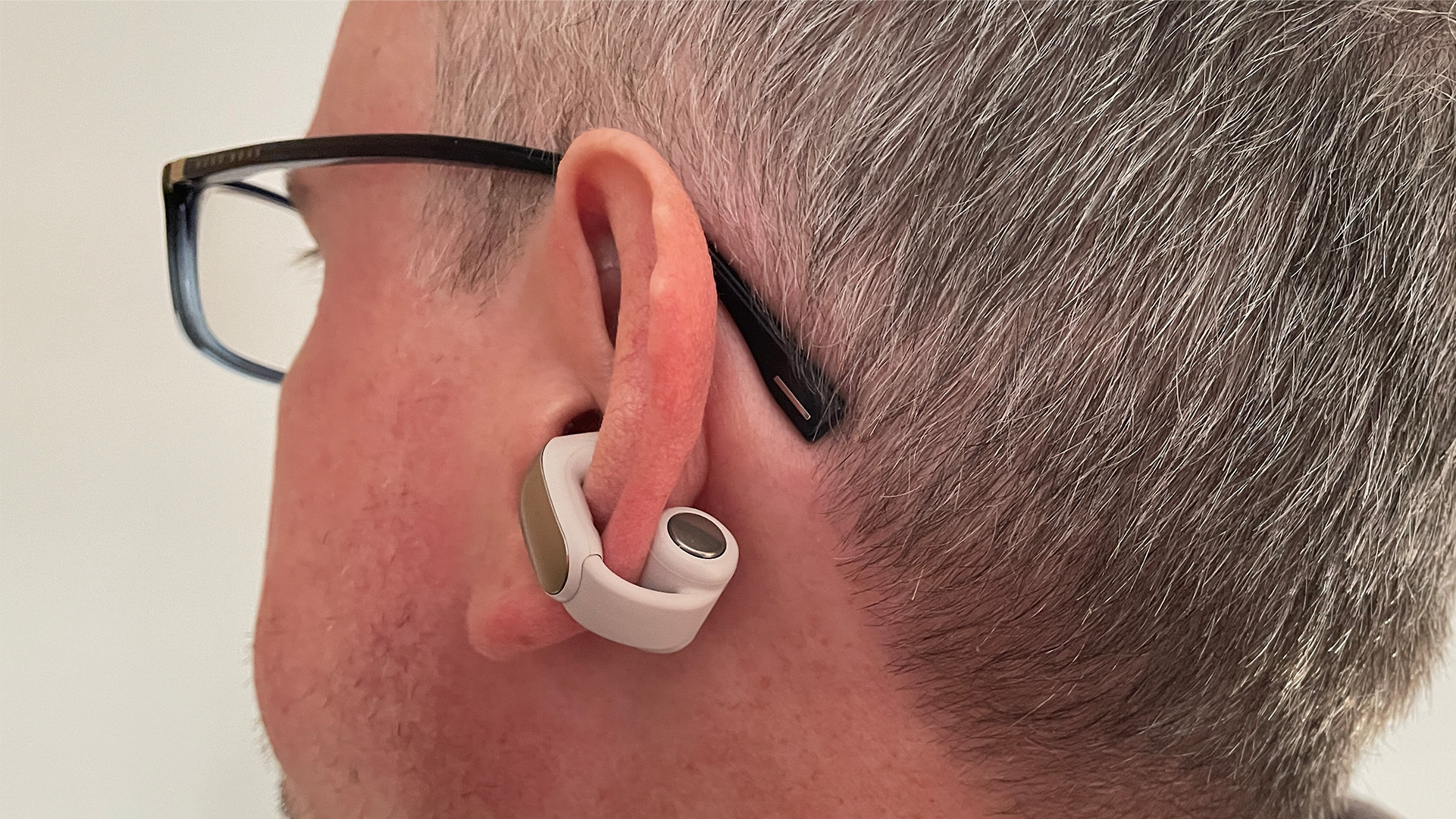
They don’t look like any other earbuds on the market so you probably won’t be surprised to learn that there is a certain technique to getting the Bose Ultra Open Earbuds in place. It starts with hooking the earbud in the bottom of your concha (the bowl-like section of your outer ear). Then you wrap the band around the back of your ear and allow the battery cylinder to help clamp the earbud in place.
It’s not as complicated as it sounds and you’ll find an instruction video in the Bose Music app to help guide you. The fact you don’t have to play around with different-sized ear tips to get the perfect seal is a real plus point versus more traditional in-ears.
Bose has been careful to stress-test that silicone band, and we’ve been assured there shouldn’t be any danger of it losing its rigidity over time. During testing, Bose also noted a lot of people actually play with an earpiece when they take one out, so twisting, flexing and fiddling have all been taken into account too.
We managed to get the fit right at the first time of asking, although it did feel alien to a couple of members of the review team. After a couple of goes, though, we soon get used to the technique and finish with the buds positioned at about a 45-degree angle. You can still feel them clipped around your ear, so we doubt you’ll completely forget you’re wearing them.
Grip levels are nicely judged, so the buds remain stable – during testing we wore them for a couple of hours at a time and they seem comfortable enough – and undoubtedly they’ll appeal to anyone who doesn’t want a silicone tip in their ear. It’s worth pointing out, though, that the clip-like design doesn’t mean you completely escape a feeling of pressure, it’s just you feel it in a different place.
Another observation is the brushed metallic finish does make the Bose appear more of a fashion accessory than purely a pair of earbuds. We could certainly see more colours or customisation options coming at some point further down the line and Bose confirmed as much to us during our briefing on the buds. For now, though, you just have the option of a black finish or the 'white smoke' of our review pair.
Features
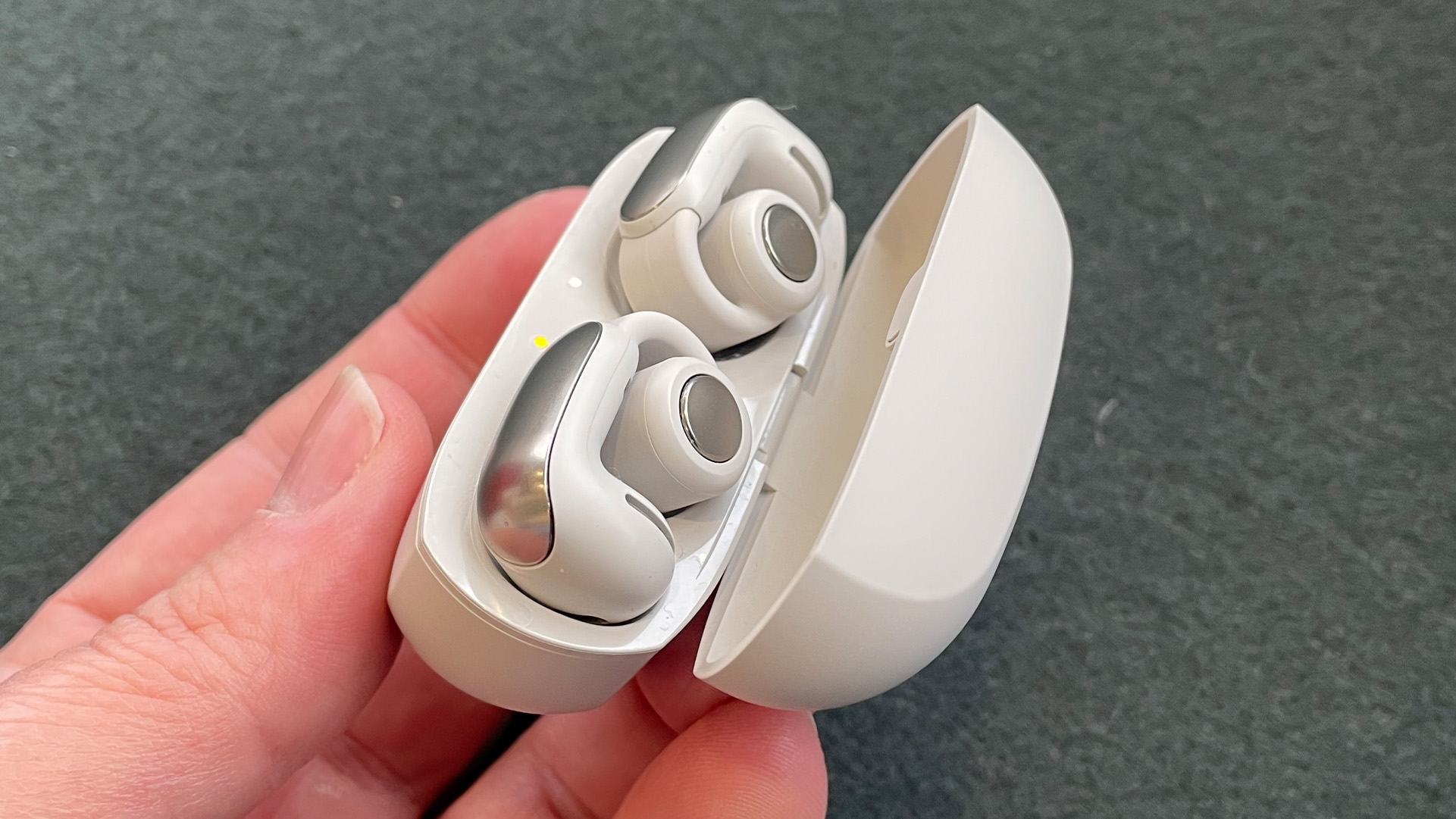
The Bose Ultra Open Earbuds support Bluetooth 5.3, and are powered by the Snapdragon Sound Technology Suite, which includes aptX Adaptive support. They also boast an IPX4 rating for water and sweat resistance, making them a decent option for runners and gym-goers alike. Google Fast Pair is on hand for those who use Android devices.
Battery life is a claimed 7.5 hours from a single charge, although this drops to 4.5 hours if you’re using Immersive Audio. The charging case (which isn’t wireless) provides an additional 19.5 hours (or 12 hours of Immersive Audio).
The buds should take around an hour to charge fully, while a ten-minute quick charge should give you two hours of playback.
Of course, because of the design, there is no noise-cancelling on offer here. Nor are there any touch controls. But, you do get a physical control button on the top of each battery cylinder.
They’re operated by the usual combination of presses, i.e. a single one to pause and play music, a double to skip forward and a triple press to skip back. Pressing and holding changes the listening mode, while double pressing and holding the right control turns the volume up, and doing the same on the left bud turns it down. Admittedly, it’s not as fancy as having dedicated touch controls, but this way works well enough.
Surprisingly, there isn’t any auto-pause when you take an earbud out like there is with the Quiet Comfort Ultra Earbuds. There’s also no multipoint Bluetooth at launch, but we’ve been told it will be enabled via a software update further down the line. In the meantime, there is an option called ‘switch source’ which can be assigned as a shortcut to one of the earbuds’ buttons. Press and hold, and the headphones will switch to the previously connected device.
Like the Bose QuietComfort Ultra Headphones and QC Ultra Earbuds, the Ultra Open Earbuds also include Bose’s Immersive Audio tech which is the company’s take on spatial audio and can be applied to any stereo music. In the past, we’ve found its effectiveness to be a little hit-and-miss and also very track-specific, and the same can be said here.
To stop ambient noise from drowning out your favourite tracks, you should consider heading to the Bose Music app to access the Auto Volume setting. It intelligently adjusts the volume for your surroundings, so it maintains a constant level as the amount of environmental noise around you changes. The app keeps turning it off every time you power the headphones down, though – it would be good if it could remember and turn itself back on.
Sound
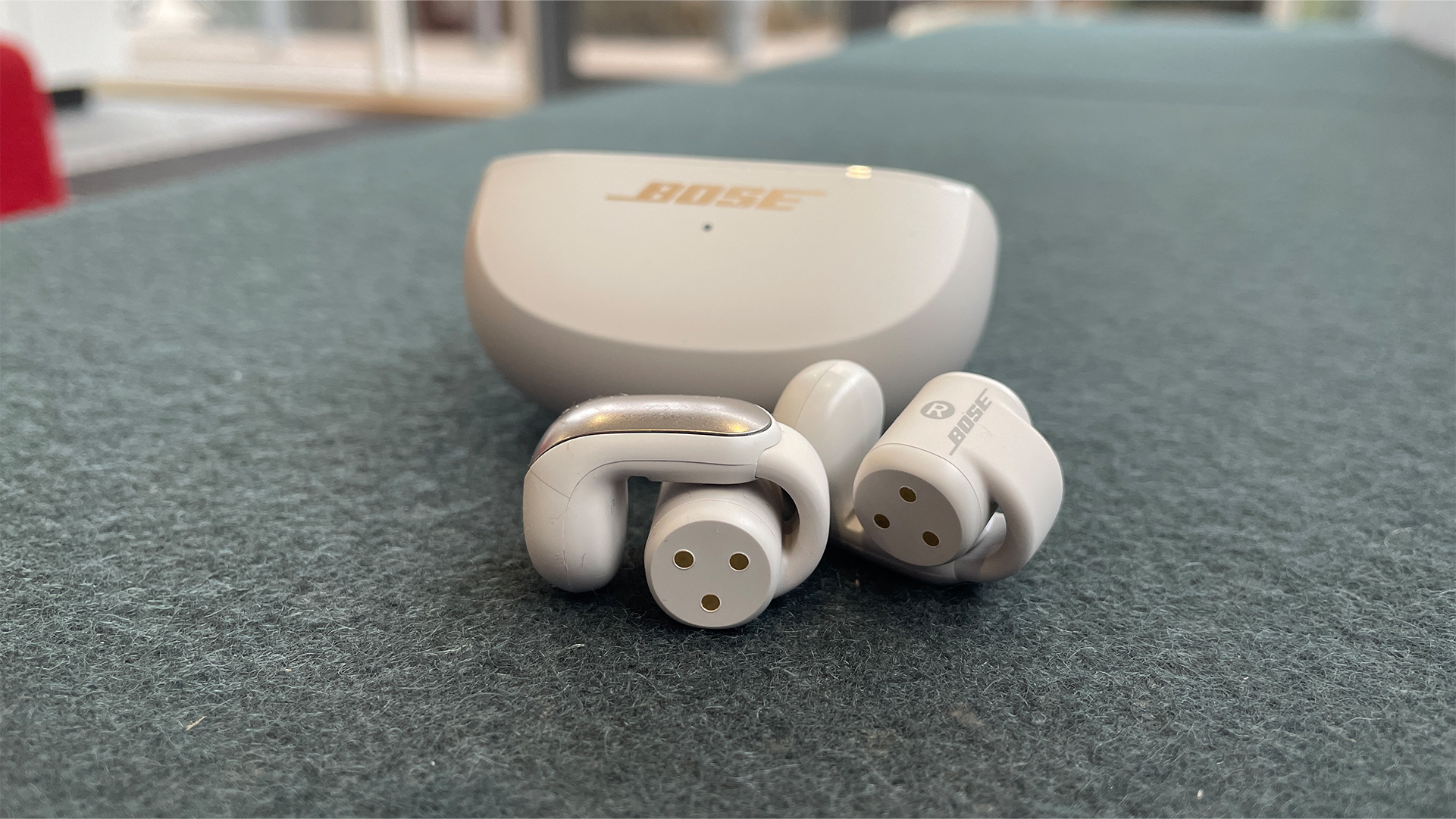
But enough of the funky design – how do the Bose Ultra Open Earbuds sound?
We weren’t quite sure what to expect, but it didn’t take more than a few seconds of Billie Eilish’s Bad Guy to raise an eyebrow. In a good way. If you are worrying about the Bose creating enough bass, then don’t.
There’s an impressive sense of weight and solidity to low frequencies. Each bass hit is a solid strike but there’s also depth and texture to them too. Even though the earbuds do let the outside world in, it doesn’t spoil the quality of bass on offer. Eilish’s vocal sounds delicate and direct and the buds present her emotions well.
We take the Bose Open buds out around our office in central London and it’s surprising how much of the music you can still hear and enjoy, even with loud background noises like buses and other general background noises.
They’re a musical, rhythmic listen too. We play James’ Say Something and the headphones lap up the lively, upbeat tempo of the track. It’s easy to enjoy the crisp drum thwacks, nicely defined lead guitar and an engaging vocal. One of the biggest compliments we can give the Ultra Open Earbuds is that they exhibit the same likeable Bose character we’ve heard from its other recent Bluetooth in-ears. They’re just a very entertaining listen.
We inject a bit of added drama to the testing with the track Mombasa, taken from the Inception soundtrack, and the Bose do a great job of communicating the pace, urgency and intensity. Although, in outright terms, we think the very best traditional wireless earbuds do have an extra gear in terms of detail and overall clarity. The Bose don’t deliver the finer details quite as clearly as the very best of those.
Verdict
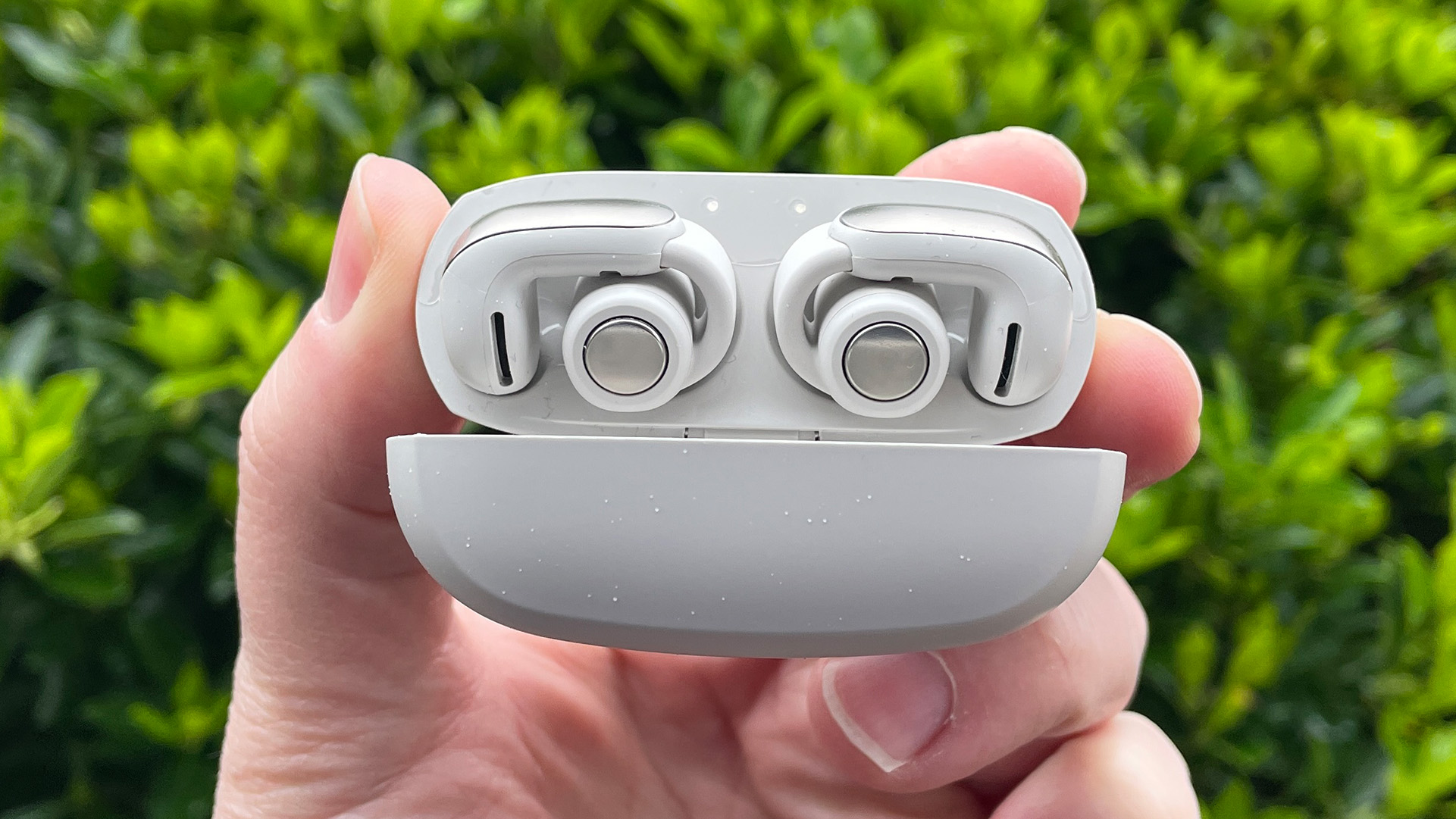
It’s always an interesting time when we’re in the early stages of a new product category. Some brands are braver than others and want to get involved straight away while others wait in the wings, observing what’s going on and weighing up the pros and cons of taking the plunge.
To its credit, Bose has gone in big and bold with the Ultra Open Earbuds – the results are impressive and probably exceeded even our expectations. Sonically, they aren’t perfect and they are quite expensive, which is why you see only four stars at the top of this review instead of five, but who knows where we’ll be a generation or two down the line. It’s a great base from which to grow.
SCORES
- Sound 4
- Features 4
- Comfort 5
MORE:
Read our review of the Sony LinkBuds (WF-L900)
Also consider the Huawei FreeClip







